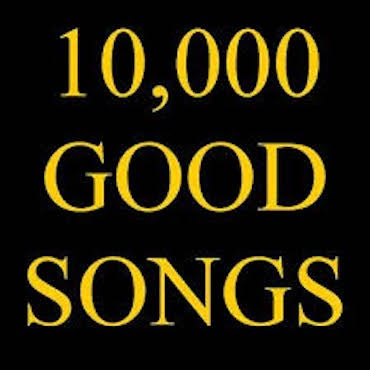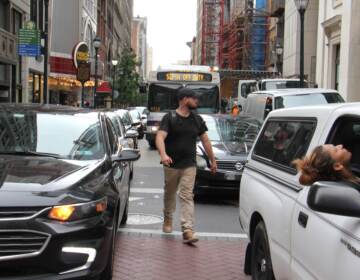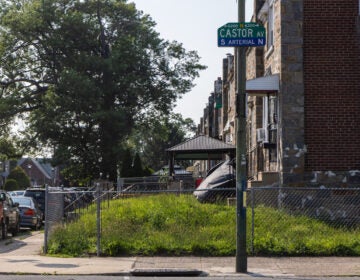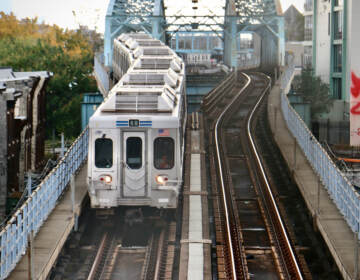Why under-funding SEPTA is state-sanctioned discrimination
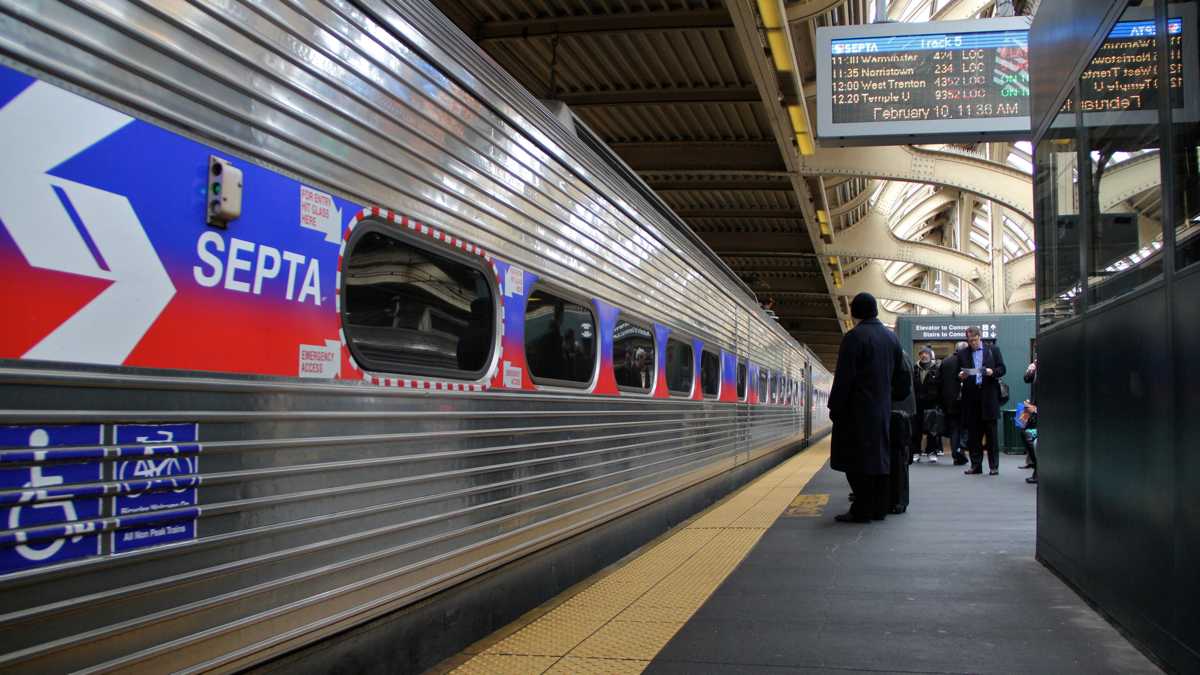
(NewsWorks
On a cold winter’s day in January 2015, my morning train arrived 45 minutes late. The Norristown High Speed Line was notorious for arriving 10 to 20 minutes later than the scheduled arrival time. It was so consistently late that I usually left for the train station 30 minutes earlier than I needed to so I could make it to work on time.
The Norristown High Speed Line runs on decades-old tracks and equipment. When it rains or snows, or the temperature drops substantially, everything slows down. The same holds true for SEPTA’s regional rail lines in and around the city. If something breaks, a rail line could take months to fix. Unless the Pope or Hillary Clinton is coming to town for a visit, there’s no money or urgency to get Southeastern Pennsylvanians to where they’re going in a hurry.
As our later-than-usual train made its way to 69th Street, an African-American woman sitting near me called her boss to let him know she was running late. “I know it’s the fourth time, but this is the only way I can get to 69th Street,” she said. “I don’t have a car, and I have to get my kids to school before I head to work. We left an hour early today so I could get to work on time.”
After the train reached the 69th Street Terminal, the woman sat motionless in her seat as other passengers exited the train and made their way to the next leg of their journey. She was a single mom trying to raise three children, and she had just been fired from her job at a retail store in Center City.
Fortunately for me, while arriving late was not encouraged where I worked, I could make up the time I missed at the end of the day.
Who suffers most when SEPTA goes off the rails?
That woman and I are part of a growing number of commuters who are completely dependent on SEPTA’s trains, trolleys, and buses for getting around. This group includes low-wage workers, undocumented immigrants, single parents raising children in poverty, riders with disabilities that prevent them from driving, individuals who have been released from prison who can’t afford a car, and elderly men and women living on a fixed income. For us, a late train can result in a lost job opportunity, a missed probation appointment, or a delayed crucial medical procedure.
SEPTA ridership is up 50 percent since 2000, which means more income is being generated by the agency. So what’s up with the ever-increasing service delays and shortages in trains and personnel?
The short answer: It’s not all SEPTA’s fault. The 52-year-old transit agency has been struggling to get by on a $1.4 billion operating budget by using decaying infrastructure that requires $5 billion worth of repairs. Nearly $550 million of SEPTA’s budget comes from federal funds, subsidies from the state, and support from four Southeastern Pennsylvania counties as well as the City of Philadelphia.
Harrisburg has made some effort to plug the holes in SEPTA’s operating budget, but our state government’s contributions to the ailing transit agency have not grown in proportion to the operational expenses or the cost of repairs needed that could allow SEPTA to expand further. And Pennsylvania governors are not known for vocal support of boosting SEPTA’s budget when they’re trying to get elected. One big reason for that lies in the rest of the state’s hatred for the City of Brotherly Love and its people.
It’s not hard to see why. After all, Philly is the city that booed Santa Claus and dismembered a hitchhiking robot. We’re also the city where white people are the minority. As of July 2015, 45 percent of Philly’s population was African-American, 14 percent is Hispanic or Latino, and 12.5 percent is foreign born. Additionally, Philadelphians living with a disability who substantially rely on SEPTA’s services make up 12 percent of the population.
Compare that to the rest of the state, where the population is 82 percent white, 11.7 percent African-American, 6.8 percent Hispanic or Latino, and 6 percent foreign born, and where 9.3 percent live with a disability.
SEPTA ridership demographics are even less white: 57 percent of riders are black, and 5 percent are Hispanic (8 percent of riders constitute the “other” category on the graph shared by SEPTA in its FY17 budget report). So by limiting funding streams for SEPTA, the state is effectively promoting state-sanctioned discrimination against citizens who are among the most vulnerable in the area. An unreliable transit system prevents them from attaining the same opportunities available to other Pennsylvanians.
We’re getting there … or not … together.
The rest of the state should care about Philadelphia and its transit system, because the city is historically significant and an important economic engine for the state. We’re the first World Heritage City in the U.S., we’re the nation’s birthplace, and we’re a significant contributor to Pennsylvania’s GDP. When business is bad for us, it’s bad for Harrisburg and the rest of the state.
It’s also worth noting that tourism is a major source of income for the both the city and the state. In 2015, a record 41 million people visited the city (and the Pope’s visit accounts for a smaller portion of that number than you think), and the Democratic National Convention is believed to have generated $350 million for Philadelphia. If you’re not convinced, try to get lunch at Reading Terminal when there isn’t a convention happening across the street. (Hint: There’s always a convention happening across the street.)
The city’s status as a must-see tourist stop and convention hub is closely linked to the efficiency of its transit system. It’s time for the rest of our fair state to view SEPTA as a partner, not a drain on the economy. After all, now that Philly has hosted Pope Francis and the World Meeting of Families and the Democratic National Convention and its cavalcade of delegates and celebrities, who knows who the next high-profile visitors will be.
—
Correction: A previous version of this op-ed stated that the Democratic National Convention is believed to have generated $530 million for Philadelphia. The correct figure is $350 million.
WHYY is your source for fact-based, in-depth journalism and information. As a nonprofit organization, we rely on financial support from readers like you. Please give today.

